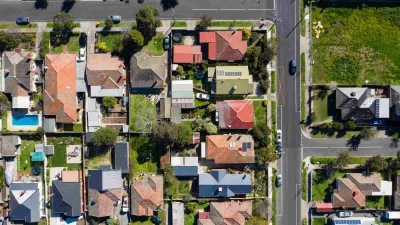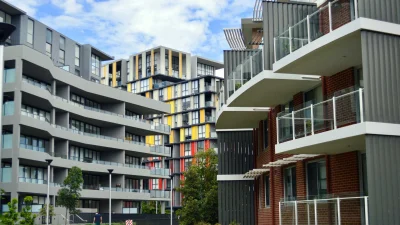“The property boom is well and truly over”: AMP Capital says home prices could fall 15-20%



The Australian property market is heading into a major correction that is likely to be deeper and longer to recover from than in past cycles, analysis by AMP Capital suggests.
Australian home prices fell 1.6% in August, figures from CoreLogic show. This was the fourth monthly decline in a row and their fastest monthly decline since the early 1980s recession, leaving home prices down by 3.5% from their high.
Shane Oliver, head of investment strategy and economics and chief economist at AMP, said the drivers of this fall are rising mortgage rates, poor affordability, a rotation in spending from goods back to services, cost of living pressures, higher listings and poor confidence.
“The property boom is well and truly over as the surge in mortgage rates is pulling the rug out from under it,” he added.
AMP expects national average property prices to fall further over the next 12 months as rising mortgage rates continue to impact, while increased listings in the spring selling season and a sharp rise in distressed selling after a surge in fixed rate loan expiries next year could further add to downwards pressure on prices.
“Assuming the cash rate tops out around 2.6% early next year then average prices are likely to fall 15-20% top to bottom, of which we have so far seen 3.5%, with the low likely being reached in the second half of next year after interest rates peak and start to fall back,” Oliver said.
However, the economist also expects the recovery in home prices to be slower than seen in property downturns over the past 25 years, for three main reasons.
Firstly, home price to income ratios are now very high, unlike 30 years ago, which will limit their upside. Upside could also be limited by increased community concern about affordability.
Secondly, household debt to income ratios are very high and there is less scope for a further increase, which would slow a recovery. Recently, there has been an increasing focus from bank regulators on limiting high debt to income ratio lending.
Finally, the 32-year falling trend in mortgage rates from 17% in 1989 to 2% enabled new buyers to borrow and pay more for property and drove strong investor demand but is now likely over.
“The long-term bull market in property prices from the 1990s was underpinned by a shift from low to high home prices to incomes, a similar shift in household debt relative to incomes and a long-term downtrend in interest rates. These are likely to have run their course,” Oliver said.
“So we may now be seeing both a cyclical slump in property prices and a weakening in the long-term trend in property prices of the last 25 years or so. Together these point to a deeper fall in prices and a slower recovery through this cycle.”
AMP also said the main downside risk to its forecast of a 15-20% home price fall would be if the cash rate is raised to the 4% level the money market is assuming. This would more than double household interest payments and push total mortgage repayments to record highs relative to incomes, likely driving a 30% or so fall in prices.
On the other hand, the two main upside risks would be if inflation quickly subsides and the RBA starts easing (“This looks unlikely,” Oliver said) and if there is a rapid rebound in immigration exacerbating the shortage of housing evident in very tight rental markets.
Recommended for you
While the impacts of hybrid work on the office sector have dominated headlines, it is a case of a flight to quality for those premium assets, portfolio managers say.
Domestic underperformance in the office sector means Australian property investors are turning their gaze towards global alternative real estate opportunities, portfolio managers say.
Money Management is pleased to launch a new white paper focused on portfolio construction with exclusive commentary from seven asset managers.
Cromwell Funds Management has entered into a merger implementation deed with Australian Unity Property Ltd.










